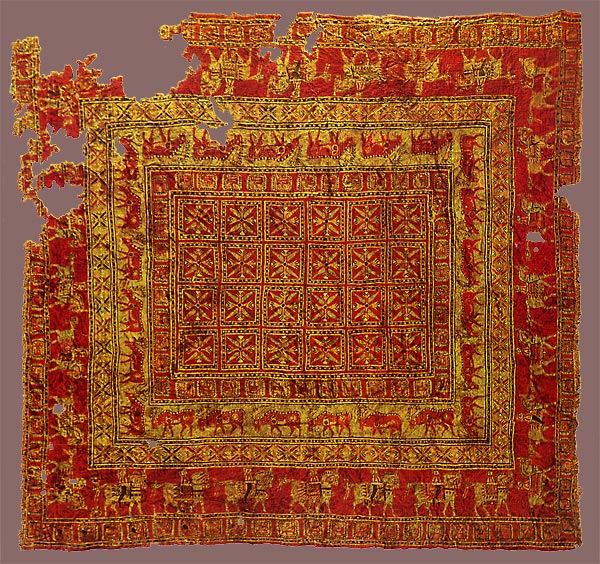Whether
your aesthetic preference lays in tradition or modernism, there’s something
universally alluring about the history of design. Persian rugs for instance
laid the foundation for modern carpet design and carry a lot of historical
weight both socially and artistically. One of the oldest Persian rugs to
maintain its original condition is the 2000 year old Pazyryk rug which resides
in St. Petersbury’s Hermitage Museum.
This
beautiful work of antique weaving was left completely untouched in a Pazyryk
burial mound located Serbia’s Altai Krai Mountain’s for two millennia. Excavated
in 1949 by Russian archaeologist Sergei Rudenko, the rug drew significant
attention for its elegant design and it’s West Asian BC origins. An exact date
that the rug would have been crafted is unclear but the quality of its
preservation is really quite profound.
The design
itself is rather fascinating with a series of griffins weaved into the border
followed by another border inward depicting 24 fallow deer walking in single
file. When the rug was discovered, it was situated next to a female mummy
wearing an Indian silk tunic raising further questions about the rugs’ exact
origins. Respected textile expert Ulrich Schurmann believes the rug is of
Armenian descent while the Persians have stated it’s an artefact from the
Achaemenid Empire. Regardless, the area of its discovery is well documented as
a trading hotspot between China and Central Asia, so who knows where it may or
may not have been?
It’s a
beautiful piece of history and one that shows how deeply rooted our contemporary
approaches lay in classic Persian design.
For more
from Living Interiors please like and follow us on Facebook and Twitter.


No comments:
Post a Comment